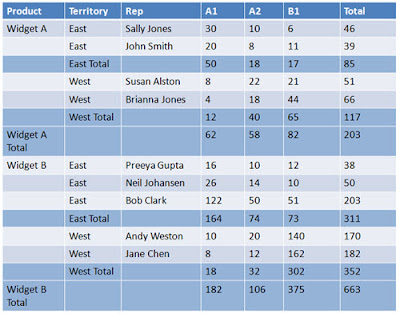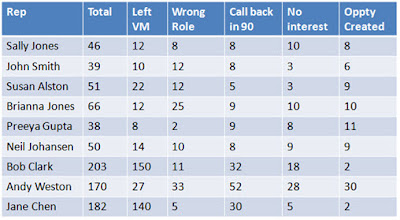Understanding which sales teams are seeing the best sourcing of leads gives a good sense of whether there is any imbalance in the lead flows. For example, in the following data, you can see that although the West is generally getting more leads, they are of significantly lower quality. Similarly, while there are lots of leads for Widget B being generated, there is a significant imbalance in lead flow to reps in the East.

With this understanding of which territories, product lines, and salespeople are provided with leads, the next step is to provide insight into the outcome of those leads once they have been handed off to sales. Done properly, the disposition of leads by a sales team after they attempt to connect with them should not only trigger a marketing process to correctly handle the leads, but also provide clear insights into the quality of the leads. If the leads were unreachable, lacked interest, were not the right role, or only had early stage interest, this insight allows marketing to see whether there are potential quality issues with their leads.
Likewise, if certain sales reps are doing a poor job in following up with the leads they are given, this will also show up in the analytics of lead disposition. In the following lead disposition chart, for example, you can see that both Bob Clark and Jane Chen received a large number of leads, but failed to convert many of them to opportunities, instead resorting to voicemails or calling back in 90 days. This may be an indication of a performance or training challenge with these two sales reps.

The more visibility we introduce to our processes for building interest, qualifying leads, handing them to sales, and having sales connect in order to grow a revenue opportunity, the better we are able to improve those processes. The cash flow statement, as a metaphor, provides a great way to look at which sales teams are getting good sources of leads, and what the uses of those leads are. The ability to optimize this lead flow or guide the sales team's response lets us optimize revenue quickly and effectively.















0 komentar:
Post a Comment